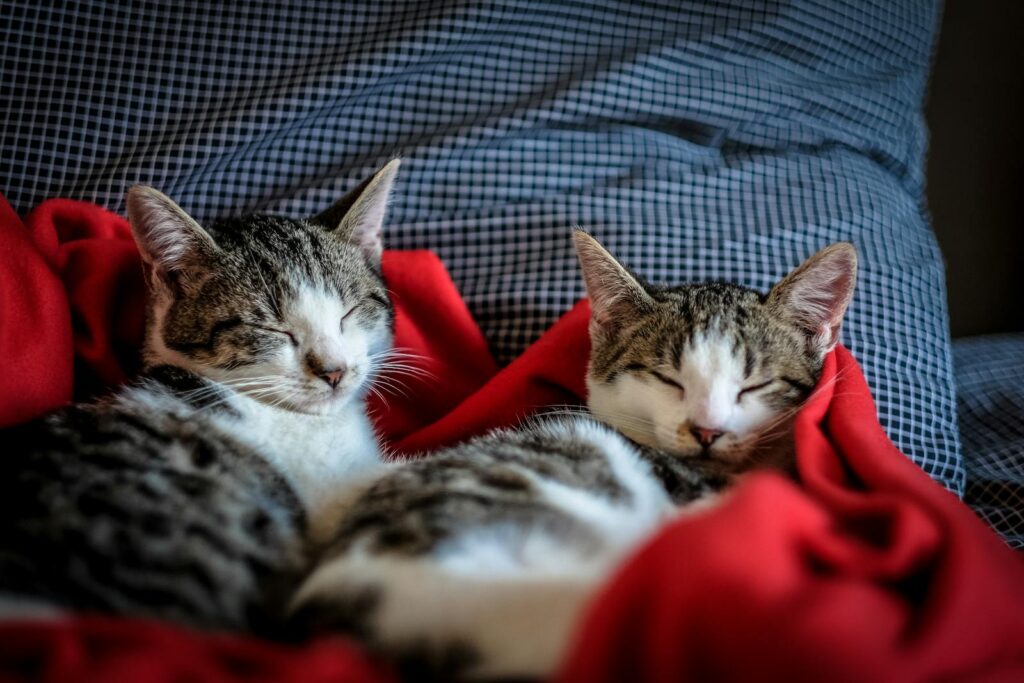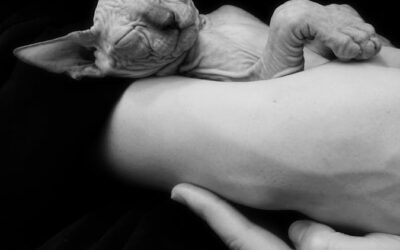If you’ve recently welcomed a kitten into your home, you’re probably wondering, “When do cats stop growing?” Cats grow at a remarkably fast rate, but their development varies widely based on factors like breed, genetics, diet, and lifestyle. Understanding your cat’s growth stages is essential for ensuring they remain healthy and happy while transitioning through different phases of their life.
This article will explore the stages of a cat’s growth, the differences between male and female cats, and when most cats reach their adult size. We’ll also provide tips for maintaining a balanced diet and lifestyle cats can grow from and thrive from to support your feline friend’s health throughout their life stages.

How Long Do Cats Normally Live?
Cats are known for their agility, independence, and curious nature, but one of the most common questions pet owners have is about their lifespan. On average, domestic cats live between 12 to 15 years, though many can live well into their late teens or even early twenties with proper care and a healthy environment.
Factors like diet, genetics, lifestyle, and regular veterinary check-ups play a crucial role in a cat’s longevity. Indoor cats generally live longer than outdoor cats, as they are less exposed to dangers such as traffic, predators, and diseases. Understanding these influences can help cat owners provide the very best care to ensure their feline companions live happy, healthy, and long lives.

Understanding a Cat’s Growth Stages
The Rapid Growth Phase (0 to 6 Months)
The first six months of a cat’s life are a period of rapid growth and development, laying the foundation for their future health and behavior. Understanding the significant milestones during this phase can help owners provide the best possible care for their young feline companions.
[divilifeshortcode id='7986']
Nutritional Needs: Kittens require a nutrient-rich diet tailored to their needs during this critical growth phase. High-quality kitten food ensures they receive the proteins, fats, vitamins, and minerals necessary for robust development.
Socialization: Early socialization is vital for shaping a kitten’s temperament and behavior. Introducing them to various environments, people, and other pets helps build their confidence and reduces the likelihood of fear or aggression in the future.
Vaccinations and Veterinary Care: Regular veterinary visits during this stage are essential. Vaccinations protect kittens from common diseases, while check-ups monitor their growth and address any potential health issues early on.
Play and Learning: Kittens are highly curious and energetic during this phase. Providing them with toys and engaging activities not only satisfies their physical needs but also supports cognitive development and strengthens their bond with their owners.
By meeting these needs during the rapid growth phase, owners can set their kittens up for a healthy and happy life ahead.

The Teenage Phase (6 to 12 Months)
The teenage phase of a kitten, spanning from 6 to 12 months, is a critical period of transition marked by notable physical, behavioral, and emotional changes. During this phase, kittens grow into their adolescent stage and begin to exhibit a mix of independence and curiosity. Here are some key points and facts about this developmental stage:
Physical Maturity: Around this time, kittens experience significant physical growth. They may start achieving their full adult size and weight, although some breeds may continue growing beyond this phase.
Behavioral Changes: Adolescence often brings a surge in energy and exploration. Kittens may test boundaries or develop a sense of independence, which can include occasional rebellious behavior, such as ignoring commands or engaging in mischievous acts.
Social Development: Social interactions with humans, other cats, and even other animals continue to be essential. This is a prime time to reinforce training, as kittens are still highly impressionable and responsive to cues.
teething and Chewing: Just like human teenagers, kittens may experience teething behaviors as they develop their full set of adult teeth. Providing appropriate chew toys can help redirect this behavior and save household items from damage.
Nutritional Needs: High-quality, nutrient-dense food is still critical during this period to support their continued growth and development. It’s also a good time to consult a vet about transitioning to adult cat food.
Spaying/Neutering: For many kittens, this phase is also when spaying or neutering might be recommended, typically around 6 months of age. Doing so can prevent unwanted behaviors like territory marking and reduce health risks later in life.The timing of neutering also has an influence. For example, male cats that are not neutered until after sexual maturity will usually be larger than those that are neutered at a younger age.
Exercise and Enrichment: Kittens in this stage need plenty of physical activity to keep their bodies fit and their minds sharp. Structured play sessions with interactive toys or introducing new challenges like puzzle feeders can help keep them engaged.
Understanding the teenage phase helps owners address the unique needs of their young cats as they prepare to enter full adulthood. Maintaining patience, consistency, and care is key to guiding kittens through this transitional period successfully.
When Do Cats Stop Growing?
Most cats stop growing physically between 12 and 18 months of age, though larger breeds like Maine Coons may continue to grow until they are 2-4 years old. While physical growth slows significantly after the one-year mark for most cats, development also depends on factors such as genetics, diet, and whether or not they are neutered or spayed.

Are Male and Female Cats Different in Their Growth?
Male Cats
Male cats tend to be larger and heavier than females of the same breed. On average, males weigh between 10-15 pounds when fully grown. Unneutered male cats may appear to have a more muscular build and chubby cheeks due to testosterone.
Female Cats
Female cats weigh less and are typically smaller than their male counterparts. Adult females often weigh between 8-12 pounds, depending on their specific breed and genetic factors. Proper nutrition and spaying can help manage their healthy weight and prevent health problems, such as uterine infections and certain cancers.

Genetics and Cat Breed Size
The size and timing of a cat’s growth are heavily influenced by their breed and parental genetics. For instance, breeds like the Siamese generally mature quicker than larger breeds like the Maine Coon, the latter often touted as the largest cat breed.
Typical Growth by Breed
- Siamese Cats: Reach adult size by around 12 months.
- Maine Coons: Continue growing until 2-4 years of age.
- Persians and Ragdolls: These medium-to-large breeds typically reach their adult weight and body shape by 18–24 months.
When adopting a kitten, asking about their parents’ size and breed can give you an idea of how large your feline friend may grow.
Supporting a Cat’s Growth Through Diet and Lifestyle
Feeding the Right Food at the Right Time
Diet plays a critical role in your cat’s development. Most kittens require specialized kitten food, which is packed with essential nutrients like protein and fat to fuel their rapid growth and playful activities. Transition to adult cat food when they reach 12 months to support their adult size and prevent unnecessary weight gain.
For larger cats that grow beyond the one-year mark, consult your veterinarian to determine the best time to switch to adult formulations. Avoid overfeeding to discourage chubby cats prone to health issues like obesity and diabetes.
Encouraging Physical Fitness
A sedentary lifestyle is one of the leading causes of weight gain in cats, especially as they grow older. Providing interactive toys, scratching posts, and plenty of opportunities for play can help them maintain a healthy body and proper muscle mass.
Invest in vertical spaces like cat trees or shelves, which encourage climbing and keep them naturally active.
Observing for Signs of Healthy Growth
Your cat’s weight, coat condition, and energy levels are often good indicators of their overall health. Here’s how you know they’re growing well:
- They display physical fitness and agility during play.
- Their coat is shiny and free of bald spots.
- They maintain a healthy weight for their breed and size.
If your older cats begin to lose muscle mass or exhibit lethargy during their “golden years,” consult your vet to address potential health concerns.
Life Stages of Cats and What To Expect
Understanding the life stages of your feline companion helps you manage their health and well-being effectively:
- Kittenhood (0-12 months): Rapid growth and high energy levels require nutrient-dense food and plenty of enrichment.
- Young Adult (1-5 years): At this stage, cats display their mature adult body shape and need a diet that matches their activity level to avoid weight gain.
- Mature Adult (6-10 years): Monitor for early cat health issues, such as dental problems or weight changes.
- Senior Cats (11+ years): Provide a high-quality senior cat diet and accessibility to litter boxes and comfortable resting areas.
Helpful Links and Resources
Here are six valuable websites and resources to help you better understand cat growth and care:
The Humane Society of the United States – Kitten Care Guide
A comprehensive guide on caring for kittens, including tips on health, feeding, and behavior.
A trusted source for expert advice on all aspects of cat health and well-being.
ASPCA – Cat Behavior Resources
Learn about common cat behaviors and how to address specific challenges.
Veterinary Partner – Cat Development Stages
Detailed insights into the developmental stages of cats and how to support them during each phase.
Jackson Galaxy – Catify Your Home
Explore tips and products to create a safe, engaging environment for your growing kitten.
American Association of Feline Practitioners – Cat Care
Access helpful resources and guides for ensuring your cat’s health and happiness throughout their life stages.
Final Thoughts on When Cats Stop Growing
While most cats reach their full adult size between 12-18 months, factors like breed, genetics, and diet influence their growth trajectory. Larger cats may continue to grow for several years, making their development fascinating to observe.
Whether your kitten matures into a small or a larger cat, providing proper nutrition, regular exercise, and attentive care ensures they thrive at every stage of life.
Hey cat parents, for more tips on promoting your cat’s well-being or selecting the right adult cat food for your feline friend, stay tuned to our blog. Here’s to cherishing every moment of your little feline’s big adventure!







